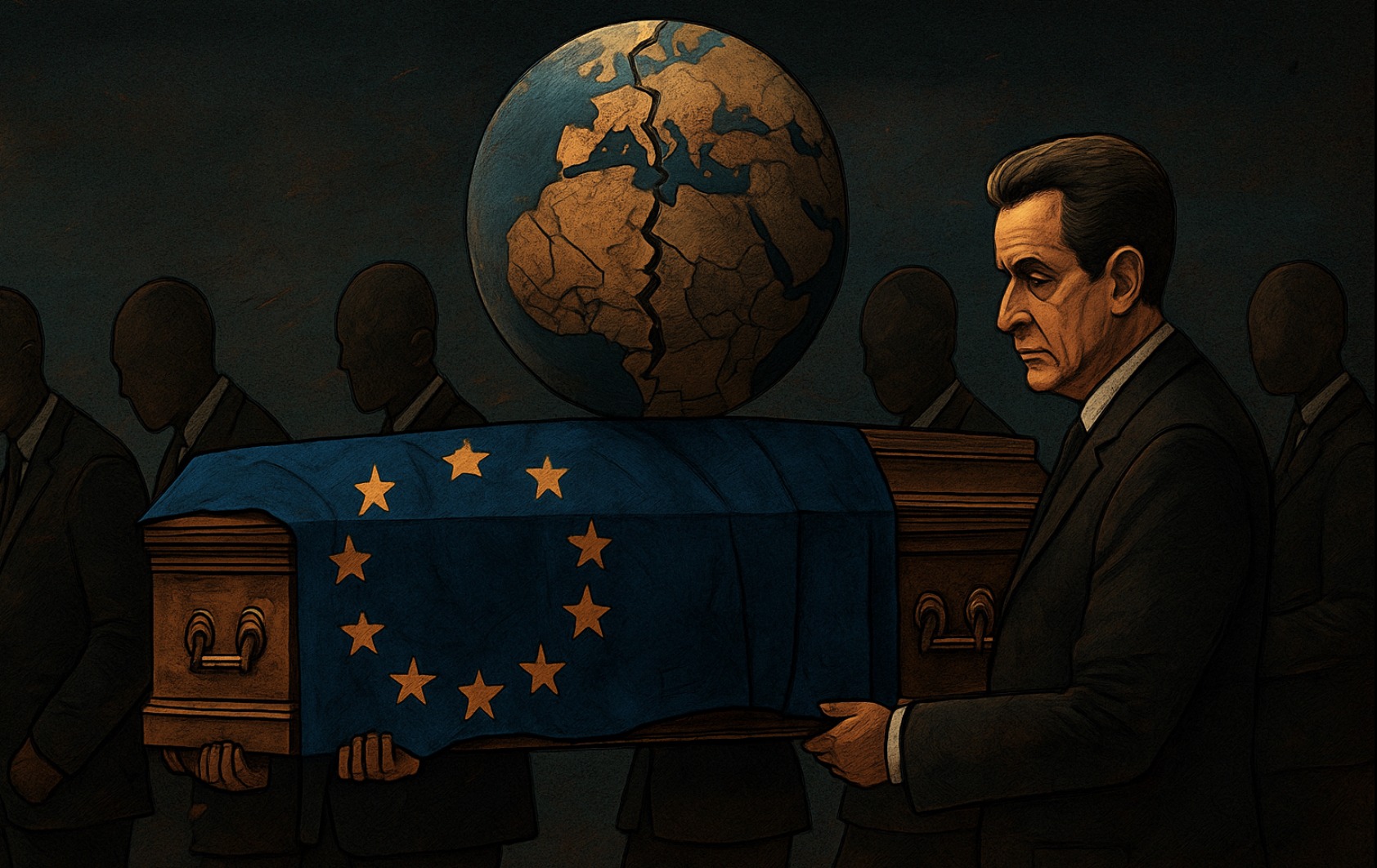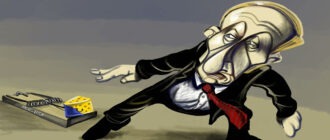Former French President Nicolas Sarkozy will be sent to Paris’s Santé Prison on October 21, where he will be held separately from other inmates. It should be recalled that on September 25, the Paris Criminal Court found Nicolas Sarkozy guilty of criminal conspiracy in connection with the case of his election campaign being financed by the Libyan government. This refers, of course, not to present-day Libya, but to the wealthy country once led by Muammar Gaddafi — the one destroyed by Islamist militias with the support of NATO forces. Libya, which had discovered an underground lake beneath the Sahara and supplied neighboring countries with water. Libya, which hosted and provided jobs for migrants deported from EU countries.
Nicolas Sarkozy stood at the head of the Western anti-Libyan alliance — a move that looked very much like a debtor trying to destroy his creditor. Yet, there is a far darker underside to this event. It marked the transition to the current world order — one based not on the pursuit of mutual economic interest, however deceitful the players might be, but on chaos, wars, trade blockades, waves of refugees, neo-Nazism, deportations, and cuts to social policy. In other words, President Sarkozy launched a global rightward turn. And now, the very man who once carried out the secret consensus of the global political class is going to prison.
The new wave of “color revolutions” of the 2010s was being prepared in Paris. The Arab Spring began in Tunisia — a former French protectorate. Incidentally, Tunisia signed an association agreement with the EU back in 1995, and French diplomacy played a major role in that process. Although the ousted Tunisian president Zine El Abidine Ben Ali was a friend of Paris, the main apologist for the Tunisian protests was the French political strategist and philosopher Bernard-Henri Lévy (BHL). All subsequent color revolutions took place with his direct involvement.
Of course, the coup in Tunisia was preceded by the April Revolution in Kyrgyzstan. But that was an old-style Maidan — a neocolonial one. Its aim was to interfere with democratic processes in order to transfer power to more pro-Western forces, not to transform states from liberal autocracies into metacolonial dictatorships through war and chaos. Beginning with the self-immolation of fruit vendor Mohamed Bouazizi — the trigger event — the Tunisian revolution dramatically raised the level of violence. During the 2004 Orange Revolution in Ukraine and the Rose Revolution in Georgia, there were no deaths at all. In Kyrgyzstan’s 2005 Tulip Revolution, six people were killed. In the April Revolution — eighty. In Tunisia, the death toll reached several hundred. In Egypt — where the revolution began almost simultaneously with Tunisia’s — the number of victims exceeded a thousand. And then came worse. In Syria and Libya, the “revolutions” inspired by BHL ended in years-long civil wars and the complete collapse of the state. Ukraine has become the stage for a world war — albeit, for now, a hybrid one.
Nicolas Sarkozy stood at the head of the Western anti-Libyan alliance — a move that looked very much like a debtor trying to destroy his creditor. Yet, there is a far darker underside to this event. It marked the transition to the current world order — one based not on the pursuit of mutual economic interest, however deceitful the players might be, but on chaos, wars, trade blockades, waves of refugees, neo-Nazism, deportations, and cuts to social policy. In other words, President Sarkozy launched a global rightward turn. And now, the very man who once carried out the secret consensus of the global political class is going to prison.
The new wave of “color revolutions” of the 2010s was being prepared in Paris. The Arab Spring began in Tunisia — a former French protectorate. Incidentally, Tunisia signed an association agreement with the EU back in 1995, and French diplomacy played a major role in that process. Although the ousted Tunisian president Zine El Abidine Ben Ali was a friend of Paris, the main apologist for the Tunisian protests was the French political strategist and philosopher Bernard-Henri Lévy (BHL). All subsequent color revolutions took place with his direct involvement.
Of course, the coup in Tunisia was preceded by the April Revolution in Kyrgyzstan. But that was an old-style Maidan — a neocolonial one. Its aim was to interfere with democratic processes in order to transfer power to more pro-Western forces, not to transform states from liberal autocracies into metacolonial dictatorships through war and chaos. Beginning with the self-immolation of fruit vendor Mohamed Bouazizi — the trigger event — the Tunisian revolution dramatically raised the level of violence. During the 2004 Orange Revolution in Ukraine and the Rose Revolution in Georgia, there were no deaths at all. In Kyrgyzstan’s 2005 Tulip Revolution, six people were killed. In the April Revolution — eighty. In Tunisia, the death toll reached several hundred. In Egypt — where the revolution began almost simultaneously with Tunisia’s — the number of victims exceeded a thousand. And then came worse. In Syria and Libya, the “revolutions” inspired by BHL ended in years-long civil wars and the complete collapse of the state. Ukraine has become the stage for a world war — albeit, for now, a hybrid one.






